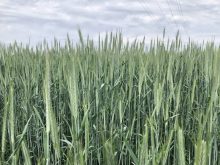Have a targeted plant population in mind for this season?
Remember that several post-seeding stresses, including cool temperatures (frost), weeds, moisture and insects, might keep your plant stand from fully establishing.
And while some of these issues, like weather, may be beyond your control, insect and disease pressure can be managed with the right seed treatment and crop protection combo.
Truth is, targeted plant populations are just one factor in determining your final plant stand and, ultimately , yield potential. You may also need to adjust your seeding rate to give yourself some buffer room against the stresses impacting your crop.
Read Also

Claas brings 1000 Series SP forage harvesters to Canada
In mid-August, Claas unveiled its new line of Jaguar forage harvesters at an event in Visalia, California, deep in the heart of that state’s dairy region.
The Canola Council of Canada says you should aim to have seven to 10 plants per square foot. They even set out a couple of ways you can count your surviving plants to confirm that you’re getting desired population numbers.
The first method involves using a 50 cm by 50 cm square or a hoop with an inside diameter of 56 cm. Count the number of plants and then multiply by four to get the number of plants per square metre.
The second method is to count plants in one meter of seed row. Take the number of plants in the row, multiply by 100 and then divide by the seed row spacing in centimeters.
Rob Klewchuk, technical services lead with Syngenta Canada.















